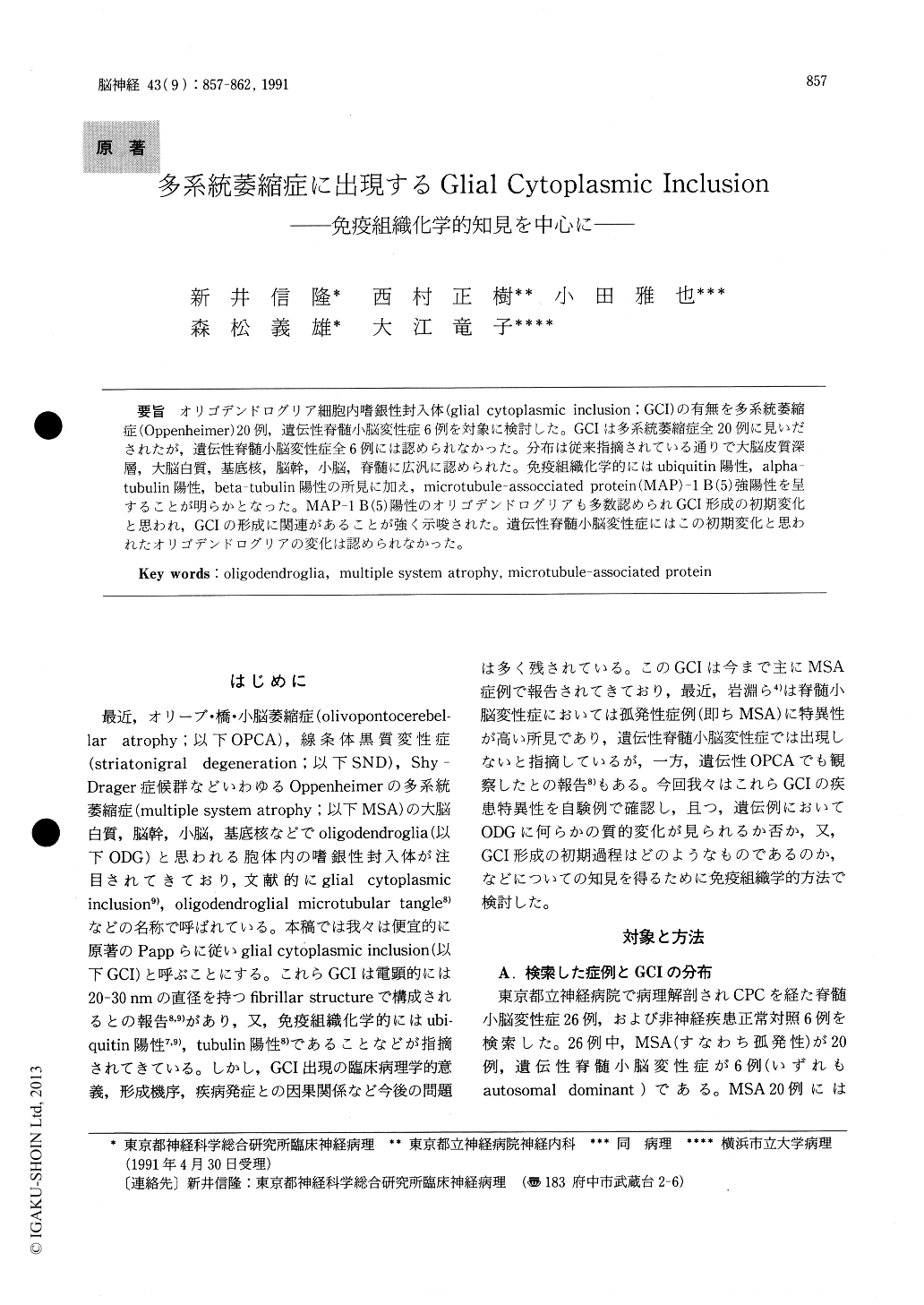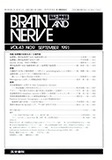Japanese
English
- 有料閲覧
- Abstract 文献概要
- 1ページ目 Look Inside
オリゴデンドログリア細胞内嗜銀性封入体(glial cytoplasmic inclusion:GCI)の有無を多系統萎縮症(Oppenheimer)20例,遺伝性脊髄小脳変性症6例を対象に検討した。GCIは多系統萎縮症全20例に見いだされたが,遺伝性脊髄小脳変性症全6例には認められなかった。分布は従来指摘されている通りで大脳皮質深層,大脳白質,基底核,脳幹,小脳,脊髄に広汎に認められた。免疫組織化学的にはubiquitin陽性,alpha—tubulin陽性,beta-tubulin陽性の所見に加え,microtubule-assocciated protein(MAP)−1 B(5)強陽性を呈することが明らかとなった。MAP−1 B(5)陽性のオリゴデンドログリアも多数認められGCI形成の初期変化と思われ,GCIの形成に関連があることが強く示唆された。遺伝性脊髄小脳変性症にはこの初期変化と思われたオリゴデンドログリアの変化は認められなかった。
Recently, glial cytoplasmic inclusion (GCI) has been demonstrated to be argyrophilic cytoplasmic body by silver staining in the oligodendroglia of patients with multiple system atrophy. We observed such GCIs in all 20 cases of multiple system atrophy. No GCI was noticed in all 6 cases of herediraty spinocerebellar degenerations. Immunohisto-chemically, GCI was stained positively with anti-bodies to ubiquitin, alpha-tubulin, and beta-tubulin, of which characteristics is consistent with previous reports. In addition, GCI was first demonstrated to react with an antibody to microtubule-associated protein-1B (5), which is one of the proteins of cytos-kelton organization and a component of cross-bridges between microtubular assembly. The result suggests strong relationship between the formationof the OCI and immunohistochemical expression of MAP-1B (5) .

Copyright © 1991, Igaku-Shoin Ltd. All rights reserved.


